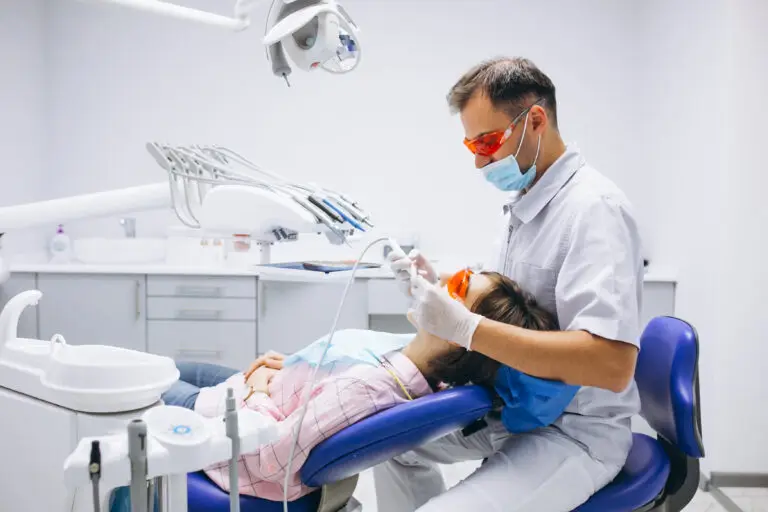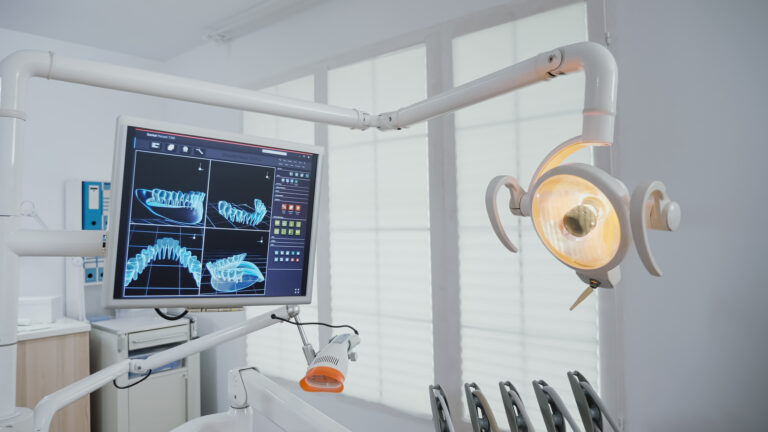Transporting Medical Gas Cylinders? Know the Rules Before You Roll
Table of Contents
Introduction
Transporting a medical gas cylinder isn’t like delivering ordinary goods.
It’s a high-risk item with strict safety and legal rules, especially for Healthcare MSMEs handling logistics in Tier 2/3 cities.
Even a small mistake during transport can lead to fire hazards, injuries, or legal penalties.
Moreover, buyers like clinics, diagnostic labs, and small hospitals expect timely and safe delivery.
So, your transport practices must be both efficient and fully compliant with government regulations.
Whether you’re a distributor or a vendor supplying oxygen, nitrous oxide, or other gases, knowing the right rules is not optional; it’s essential.
In this guide, we’ll break down everything you need to know about the safe and legal transportation of medical gas cylinders in India.
From vehicle requirements to labelling norms and driver training, this article has you covered. Let’s make your delivery system both safe and regulation-ready.
1. What Are the Government Regulations for Transporting Medical Oxygen and Other Gases in India?
Transporting medical gas cylinders, such as oxygen or nitrous oxide, is strictly regulated in India.
Two main regulations govern this process:
1. Gas Cylinder Rules, 2016
Issued under the Explosives Act, these rules outline:
- Licensing: Only licensed dealers and manufacturers can fill, store, or transport medical gas cylinders.
- Approved Vehicles: Cylinders must be transported in vehicles approved for compressed gas transport, with proper ventilation and restraints.
- Labeling Requirements: Each medical gas cylinder must display clear hazard labels, expiry date, gas type, and handling instructions.
- Valve & Cap Protection: Cylinders must be capped and valves protected to prevent leaks or accidents.
2. Motor Vehicles Act, 1988 (with amendments)
According to this act:
- Transporters must use authorized goods vehicles with trained drivers.
- The driver must carry Material Safety Data Sheets (MSDS) and emergency contact information.
- Cylinders should be secured upright, with no risk of rolling or impact during transit.
Penalties for Non-Compliance
Non-adherence can result in:
- Heavy fines
- Seizure of goods
- Cancellation of operating licenses
- Legal action under explosive and traffic safety laws
Takeaway: If you’re a Healthcare MSME or supplier, it’s critical to train your delivery staff and upgrade your vehicles as per these rules.
It’s not just about safety, it’s also about business continuity and legal protection.
2. What Safety Precautions Must Be Followed When Delivering Oxygen Cylinders to Hospitals or Clinics?
When delivering medical gas cylinders, especially oxygen, Healthcare MSMEs must prioritize both safety and regulatory compliance.
Here are the key precautions every supplier must follow:

1. Handle Cylinders Upright and Securely
- Always transport cylinders in an upright position.
- Use safety chains, clamps, or racks to prevent movement or rolling during transit.
- Never drag, drop, or roll a cylinder on its side.
2. Protect the Cylinder Valve at All Times
- Cylinders must have their valve caps and guards fixed before loading.
- Never use a cylinder if the valve is leaking or damaged.
- Avoid exposure to oil or grease on valves this can cause explosions with oxygen.
3. Ensure Proper Labeling and Identification
- Every oxygen cylinder must be clearly labeled with:
- Gas name
- Hazard class
- Expiry date
- Manufacturer and batch number
- Avoid using cylinders with faded or missing labels.
4. Maintain Safe Temperatures During Delivery
- Store and transport cylinders between 10°C and 35°C.
- Keep them away from direct sunlight, heaters, or confined spaces.
- Use insulated vans if the ambient temperature is extreme.
5. Train Your Delivery Personnel
- Drivers and handlers should be trained in:
- Safe loading/unloading
- First-aid for oxygen leaks
- Use of personal protective equipment (PPE)
Summary Tip: By following these oxygen cylinder safety rules, you reduce the risk of accidents, ensure smooth hospital deliveries, and stay compliant with India’s transport laws. For Healthcare MSMEs, this protects both reputation and revenue.
3. Do You Need Special Licenses or Permits to Transport Medical Gas Cylinders Commercially?
Yes, transporting medical gas cylinders in India is not just about logistics; it’s a regulated operation under safety and explosive material laws.
If you’re a Healthcare MSME or transporter handling gases like oxygen or nitrous oxide, here’s what you need to legally operate:
1. PESO License (Petroleum and Explosives Safety Organization)
- You must obtain a storage and transport license from PESO, under the Gas Cylinder Rules, 2016.
- This license is mandatory if you’re transporting gas cylinders for commercial or bulk delivery.
- It ensures your cylinder handling practices, vehicles, and facilities follow national safety norms.
2. Driver Training Certification
- Drivers must be trained in handling compressed gas transport.
- Certification includes knowledge of:
- Hazard identification
- Cylinder handling and emergency response
- First aid and leak protocols
3. Vehicle Endorsement and Compliance
- The vehicle used must be endorsed for hazardous goods transport under the Motor Vehicles Act.
- You need:
- Hazardous goods transport permit
- Safety stickers and signage (e.g., “OXYGEN – NO SMOKING”)
- Fire extinguisher and protective gear onboard
- Valid PUC and insurance
4. Periodic Inspection and Recordkeeping
- Vehicles, cylinders, and licenses are subject to periodic inspections by PESO or local authorities.
- Keep records of:
- Delivery logs
- Driver certifications
- Cylinder batch numbers and expiry
Final Note: Failing to secure these permits can lead to heavy penalties, cylinder seizures, or legal action.
For Healthcare MSMEs, compliance isn’t optional; it’s a critical part of building a safe and trusted supply chain.
4. What Are the Approved Vehicle Types and Loading Practices for Medical Gas Delivery?
For transporting medical gas cylinders, not just any vehicle will do.
To stay compliant and ensure safe delivery to hospitals and clinics, Healthcare MSMEs must follow specific vehicle guidelines and loading protocols laid down under the Gas Cylinder Rules, 2016, and the Motor Vehicles Act.
Approved Vehicle Types:
- Open-Body Trucks (Preferably for Safety):
- Ensures ventilation to prevent gas accumulation in case of leakage.
- Must have metal flooring and be free from oil, grease, or any flammable substances.
- Closed Vehicles (Allowed with Precautions):
- Must be well-ventilated, with exhaust fans or vents installed.
- Suitable for weather protection, but must follow all safety protocols.
- Mini Vans or Pick-up Vehicles (For Small Loads):
- Acceptable for small-scale Healthcare MSMEs supplying to nearby clinics.
- Must still follow mounting and signage regulations.
Safe Loading Practices:
- Cylinder Mounting:
- All cylinders must be secured upright using chains or belts.
- Avoid stacking. Never lay cylinders horizontally unless designed for that.
- Segregation:
- Clearly separate full and empty cylinders during transport.
- Label them visibly for easy identification and safe unloading.
- Signage and Labels:
- Display “Caution: Compressed Gas” and “No Smoking” signs on all sides.
- Use reflective stickers and UN hazard labels (e.g., UN1072 for oxygen).
- Fire Safety:
- Every vehicle must carry:
- At least one 2 kg fire extinguisher
- Sand bucket or fire blanket (recommended)
- Driver and Loader Awareness:
- Ensure the driver and any helper know how to handle gas leaks or cylinder movement issues.
By using the right vehicles and following these approved loading practices, small medical gas delivery operators can prevent accidents, ensure legal compliance, and maintain trust with clinics and hospitals.
5. What Are the Penalties for Violating Medical Gas Transport Regulations in India?
Transporting medical gas cylinders without following safety and regulatory protocols is a serious offense in India.
For Healthcare MSMEs, non-compliance can result in not just financial loss but also legal consequences that impact long-term business continuity.
Key Penalties for Violations:
Type of Violation | Penalty Imposed | Legal Authority |
Transporting cylinders without a PESO license | Fine up to ₹1 lakh or imprisonment up to 2 years | Explosives Act & Gas Cylinder Rules |
Failure to label or use proper signage | Seizure of cylinders and possible license suspension | Gas Cylinder Rules, 2016 |
Using unapproved vehicles or unsafe loading | Suspension of transport permit and confiscation of goods | Motor Vehicles Act |
Negligent handling leading to accidents or leaks | Criminal liability, including jail time and cancellation of the license | IPC Sections 285, 336, 337, 338 |
Not maintaining delivery records or manifest | Penalty or disqualification from government contracts | Drug and Cosmetics Rules + PESO |
Why It Matters for Small Businesses:
- Reputation Damage: A single compliance violation can erode trust with hospitals and distributors.
- Business Disruption: Seizure of goods or vehicle suspension leads to delayed deliveries and revenue loss.
- Future Blacklisting: Repeat violations can bar MSMEs from getting PESO licenses or registering with government portals.
To avoid these risks, it is essential for Healthcare MSMEs dealing with medical gas cylinders to strictly follow transport rules, maintain all permits, and invest in staff training. Prevention is always cheaper than the penalty.
6. How Can Gas Suppliers Use Tracking Tools or SOPs to Ensure Safe Last-Mile Delivery?
For gas suppliers, especially those dealing with medical gas cylinders, last-mile delivery is a high-risk, high-responsibility operation.
Healthcare MSMEs must ensure safety, compliance, and transparency in every shipment. This is where digital tools and standard operating procedures (SOPs) become essential.
Practical Tools for Safer Gas Delivery:
Tool or Method | Purpose |
GPS Trackers (e.g., via Fleet Apps) | Real-time vehicle tracking and route visibility |
WhatsApp Alerts | Instant updates to hospitals on estimated arrival |
Digital Delivery Logs | Electronic proof of delivery, time stamps, and signatures |
Temperature Monitoring Sensors | Ensures oxygen cylinders are kept under safe thermal conditions |
Driver Safety Checklists | Prevents skipped safety steps before and after loading |
Fuel and Route Optimizers | Minimizes idle time and detours for safer, faster transport |
Why This Matters:
- Reduces Risk: Digital oversight ensures that every trip is documented and monitored.
- Increases Trust: Clinics and hospitals get reliable updates and feel more secure.
- Improves Compliance: SOPs create discipline and reduce human error.
- Faster Response in Emergencies: Tracking tools help respond quickly to route or safety issues.
In short, combining SOPs with digital tracking makes medical gas cylinder delivery safer, faster, and more reliable, especially for Healthcare MSMEs operating in Tier 2 and 3 cities.
Conclusion: Don’t Delay. Comply with Medical Gas Transport Rules Now
Transporting medical gas cylinders is not just a logistics task, it’s a life-critical responsibility.
For Healthcare MSMEs and small gas distributors, non-compliance can mean heavy penalties, seized shipments, or worse, putting lives at risk.
From understanding the Gas Cylinder Rules 2016 and obtaining PESO licenses to using the right vehicles with proper mounting and safety signage, every detail matters.
Adding to this, last-mile safety cannot be left to chance. Implementing SOPs, using GPS trackers, real-time WhatsApp alerts, and digital delivery logs significantly reduces risk and builds trust with your hospital clients.
Now is the time to upgrade your operations. Stay compliant. Stay accountable. And most importantly, stay safe.
Because in the world of oxygen delivery, every second counts and every cylinder matters.
The Following Video Might be Helpful for You
Also Read,
- The Ultimate Guide: Working Capital Loans for Small Business (MSMEs) in 2025
Understanding the Impact of Payment Terms on Working Capital for Clinics
How Poor Inventory Management Hurts Working Capital in Pharmacies.
Want a Better Business Credit Score? Small Pharmacies Can Now Use UPI & Cards to Build It
Want a Better Credit Score? Use Small Daily Payments to Build Your CBIL (For Clinics & Pharmacies)
Case Study:How a Small Clinic Improved Its Working Capital Management





